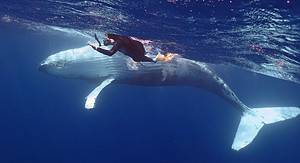
Whales can be difficult to study due to the fact that many species live deep in the ocean, hundreds of feet below the surface. Sperm whales spend much of their time diving deep in search of food. They can reach depths of 3,000 or more feet, which is a little more than a half-mile. So how do we know how long whales live? Is it possible that there are whales well below the surface that are more than a hundred years old? One thing we do know is that whales are mammals and therefore breathe air to live. So even if there are whales that are deep divers, they have to come to the surface at some point so their blowholes can access air to refill their lungs. Because they continuously have to return to the surface researchers are able to use satellite imagery to study and track whales. So how long have scientists found whales to live?
How long do whales live?
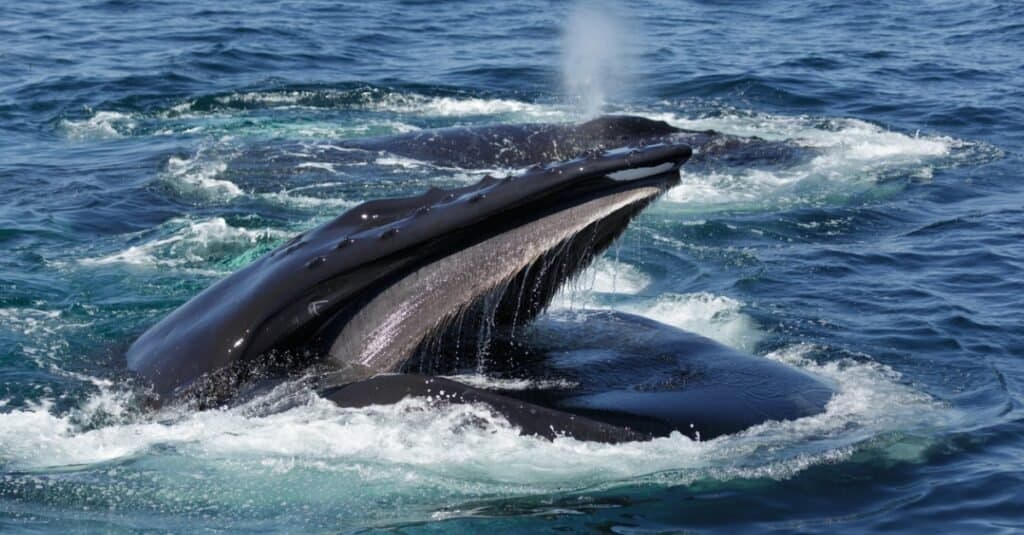
The average lifespan of a whale is from 20 to 100 years, dependent on species.
©iStock.com/stephenallen75
Whale lifespans generally range from 20 to 100 years, but vary by species. One whale species can even live beyond 200 years of age! Let’s dig into a few Cetaceans (whales, dolphins, porpoises) to see how long different species live.
Bottlenose dolphins lifespan
Bottlenose dolphins can live beyond 40 years when well cared for. The oldest bottlenose dolphin on record reached 61 years of age and lived at a marine center in Florida. In the wild lifespans are much lower, with the median dolphin living to just 17 years on the upper bounds of estimates. The lifespan of bottlenose dolphins is lower in the wild because they face predators and other threats.
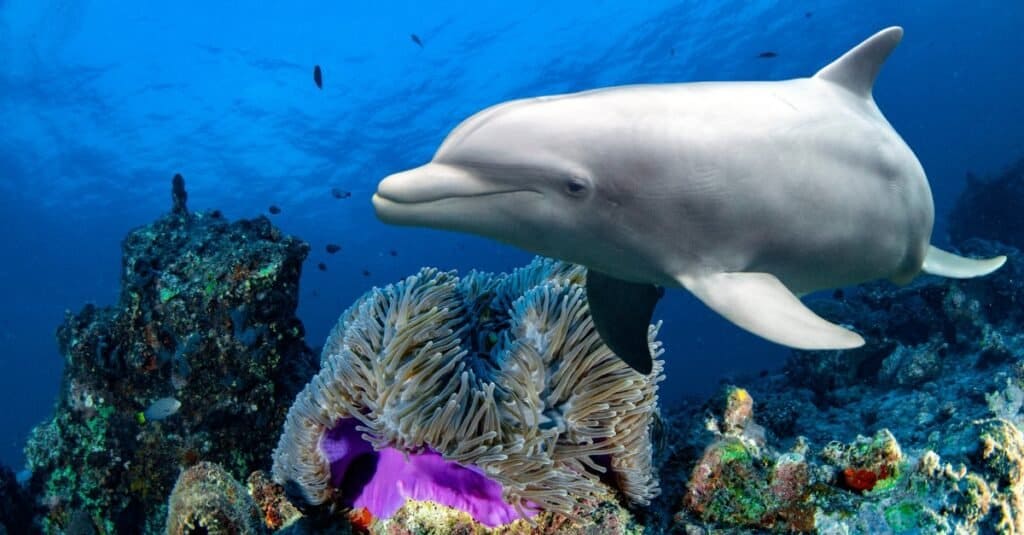
A bottlenose dolphin can live beyond 40 years with proper care.
©Andrea Izzotti/Shutterstock.com
How long do blue whales live?
Believe it or not, the best way to measure a blue whale’s age is their ear wax! As blue whales age, their ear wax alternates layers indicating when the whale was either migrating or in feeding periods. Like counting the rings on a tree can provide its age, you can similarly count the periods between migrating and fasting in a blue whale’s ear wax to get a reliable estimate of how old they are! Using this method scientists have estimated that pygmy blue whales can live longer than 70 years while larger Antarctic blue whales can live to around 90 years of age.
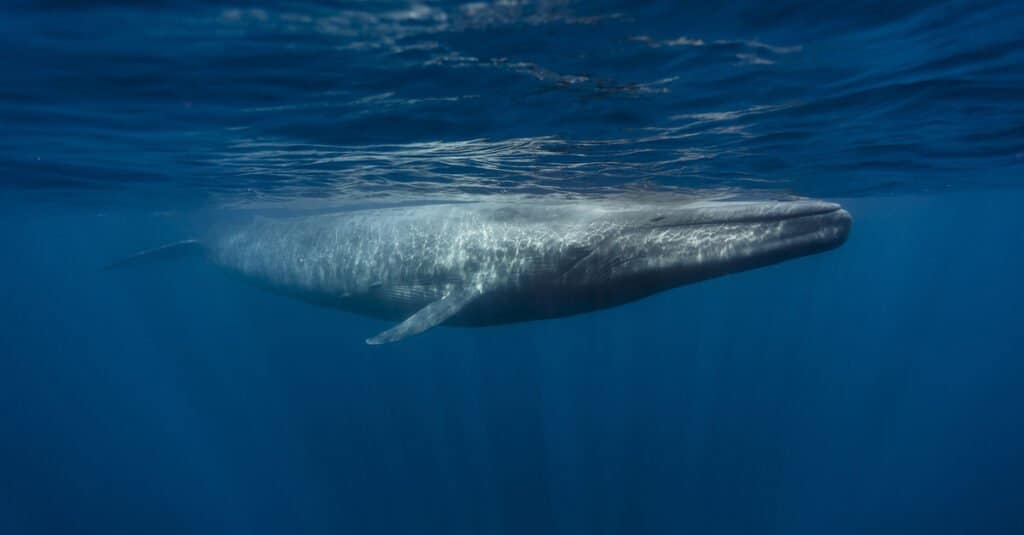
The age of a blue whale is determined by its ear wax.
©Andrew Sutton/Shutterstock.com
How long do killer whales live?
Somewhere between the size of a blue whale and a bottlenose dolphin sits orcas, so you might wonder how long killer whales live. Sadly, killer whales struggle to live for long periods in captivity, where their lifespan is often 30 years or less. In the wild, killer whales can reach beyond 40 years of age.
The oldest killer whale in the wild was known as “granny” that lived off Washington state and British Columbia. The age of “Granny” is hotly contested, but some reports have her living from 1911 to 2016, which would make her 105 years old. Granny was captured in 1967 with the aim of moving her to a marine park, but she was deemed too old at the time, which was 49 years before she finally passed away! Its like Granny’s age was closer to 60 to 80, which still shows the long maximum lifespans killer whales are capable of in the wild!
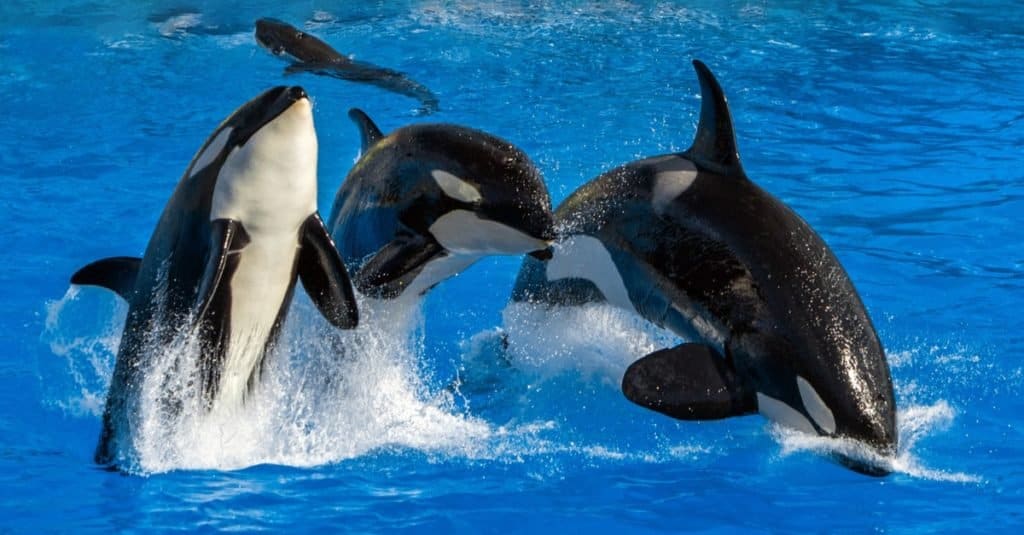
Killer whales struggle to live over 30 years when living in captivity.
©Andrea Izzotti/Shutterstock.com
Do the biggest whales live the longest?
The three biggest whale species are the blue whale, fin whale, and sei whale, and they do have some of the longest life expectancies, but not the longest. Blue whales can grow to be 80-100 feet long (that is the length of three school buses parked in a row!). They are found throughout the world in the North Pacific Ocean, Indian and Antarctic Oceans, and in the southern part of the Atlantic Ocean. Due to whaling these grand animals are considered endangered by the IUCN, but the good news is their numbers are increasing, helping more blue whales reach their life expectancy. As noted above, blue whales can often reach 70 to 90 years of age.
Fin whales, also a member of the Rorqual family of whales, can grow to be 75-85 feet and have a similar life span to the blue whales with the average fin whale living 80-90 years. Sei whales are the third largest whale, with a length of 40-60 feet and a life span of 50-70 years. Fin whales are listed as vulnerable by the IUCN and the Sei whales are listed as endangered, but both species are increasing in population, like the blue whales.
What whale has the longest life span?
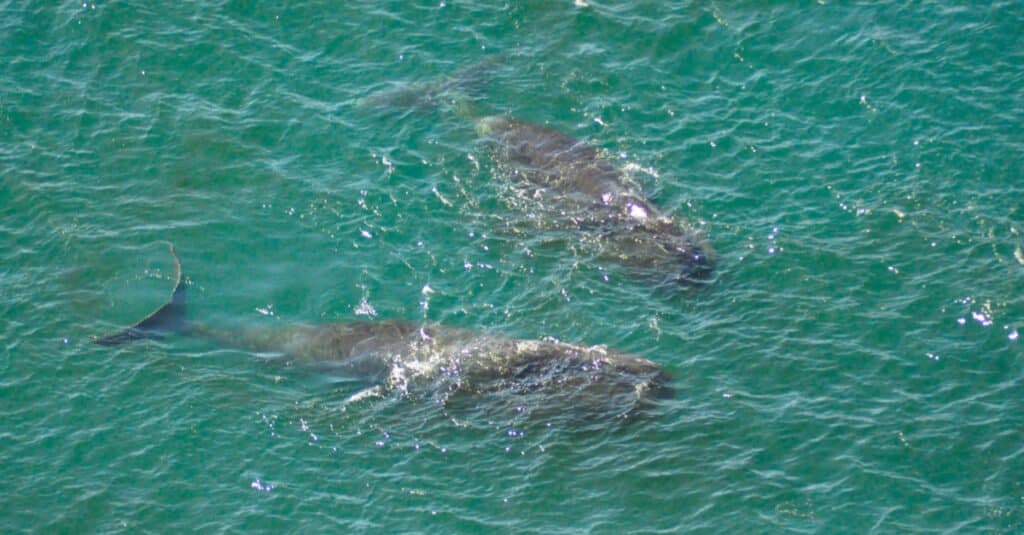
A pair of
bowhead whales
off the coast of Russia. The species can live more than 200 years!
©Vladimir Chebanov/Shutterstock.com
If the largest whales have long lifespans but not the longest, then which whale has the longest life span? The bowhead whale! These whales have been recorded to live longer than 200 years. The life span of bowhead whales averages 100-200 years old. Researchers find it fascinating to study these giant creatures, figuring out why these are the longest-living mammals on earth. Some are trying to discover what can be applied to humans to extend our species’ life span.
How do these enormous whales delay aging and avoid getting a variety of age-related diseases? One research study examined the gene sequence of bowhead whales searching for “the existence of natural mechanisms that can suppress cancer more effectively in these animals.” They are looking for clues as to how these whales age slower and seem to be cancer resistant.
One theory on their long life spans revolves around the idea that because they live primarily in the Arctic and sub-Arctic oceans, they have adapted to life in extremely cold waters. Similar to animals that hibernate during the winter, they lower their metabolism and may extend their lives. This is another reason researchers are fascinated by the bowhead whale.
How long do toothed whales live?
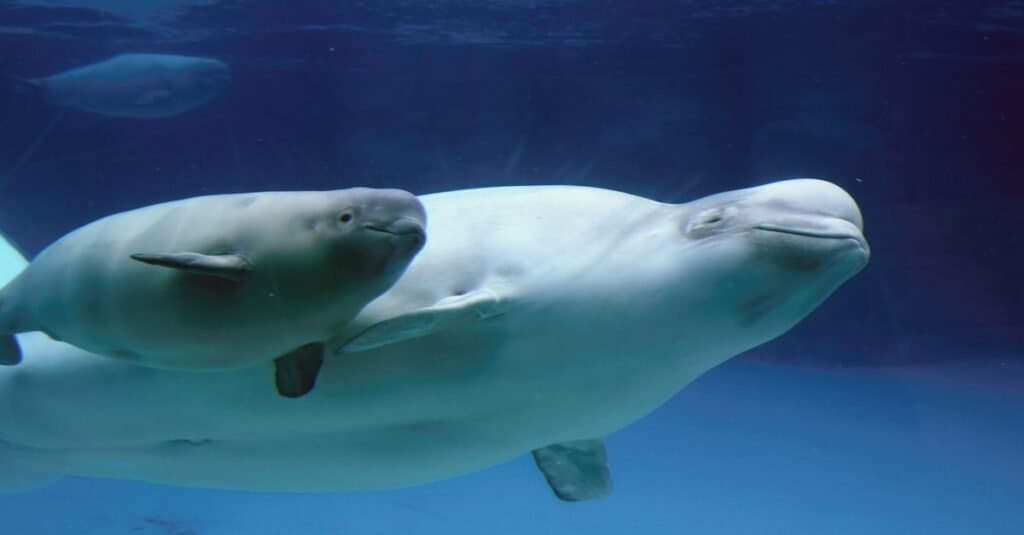
The beluga whale has a lifespan of 35-50 years.
©CampCrazy Photography/Shutterstock.com
Whales are grouped into two groups, baleen whales (like the ones mentioned above: blue, fin, sei, and bowhead whales) and toothed whales (like sperm and beaked whales as well as dolphins, porpoises, and belugas). The largest of the toothed whales is the sperm whale; they can grow to be 40-50 feet long. Unlike baleen whales that sieve the ocean for small fish, crustaceans, krill, and plankton, toothed whales hunt their prey and attack squid, skates, and even sharks! Sperm whales have a long life span as well ranging from 60-80 years. The pygmy sperm whale and dwarf sperm whale are two other toothed whales, but they are significantly smaller than the sperm whale, they are also quite rare. These whales only get to be 11 ½ feet long and since we have been seeing a correlation between the larger animals living longer one might guess that these smaller whales have a shorter life span. That would be correct. The pygmy sperm whale has a life span of up to 23 years, so less than half that of the sperm whale.
Beaked whales are another toothed whale that is also considerably smaller, but they are larger than the pygmy sperm whale. There are several species of beaked whales but one of the most common is the Cuvier’s beaked whale which can grow to be 15-23 feet long. Their average life span is 50-60 years. Although sperm whales are known to be deep divers, the Cuvier’s beaked whale holds the record for the deepest dive. Researchers tagged a few beaked whales and recorded by satellite how deep they dive. The deepest dive was from a Cuvier-beaked whale at 2,999 meters (1.86 miles!). Now that is a deep dive!
What about the lifespans of dolphins and porpoises?

While dolphins average up to 40 years of life, the lifespan of white-beaked dolphins is unknown.
©Agami Photo Agency/Shutterstock.com
Dolphins and porpoises are whales and have several family groups. Porpoises are in a family group of their own and differ from dolphins in being smaller and having a shorter beak with a rounded nose. Porpoises grow to be between 5-7 feet long and have an average life span of 23 years. Dolphins have several family groups including both sea and river dolphins. The most common, the bottlenose dolphin lives to be 20-40 years old on average whereas the smaller Amazon River dolphin (or pink dolphin) has a life span of 12-18 years.
The photo featured at the top of this post is © Tomas Kotouc/Shutterstock.com
Thank you for reading! Have some feedback for us? Contact the AZ Animals editorial team.





